After telling us about his work at Double Negative on KICK ASS, Mattias Lindahl is back on The Art of VFX to tell us about his new project, ATTACK THE BLOCK, this time at Fido in Sweden.
How did Fido got involved on this film?
Double Negative, who originally was going to do all the VFX work on the film, approached us. Due to timing issues they found themselves short of resources and asked us to bid for the work. I was already familiar with the show since I was involved with it before I left Double Negative when the film was still in pre-production. I was originally set to supervise the work for Dneg, but since I had already decided to relocate to Stockholm, I had to pull out. I was of course thrilled that I still got to work on the film in the end.
How was your collaboration with director Joe Cornish and Double Negative VFX Supervisor Ged Wright?
Really good. Joe is really easy to get on with. Since this was his first feature he obviously had limited experience from working with visual effects. Even though his vision for the film and the look of the creatures was very strong, he was at the same time great at taking onboard ideas from us on how to solve creative and technical problems. I’ve known Ged for a long time. He did a great job presenting our work to Joe. He worked really well as a filter between us and Joe. Making sure the work was presented the right way. I traveled over to London a few times for key meetings. But other than that, most of the communication was done using Skype and Cinesync, which worked really well.
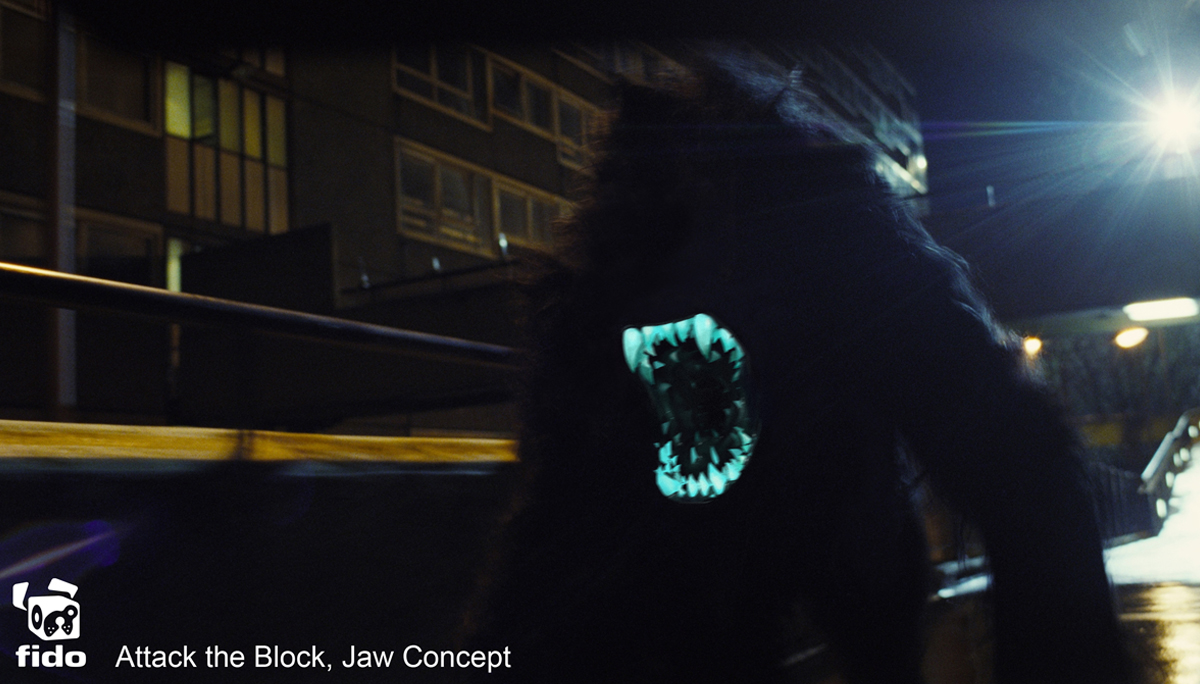 |
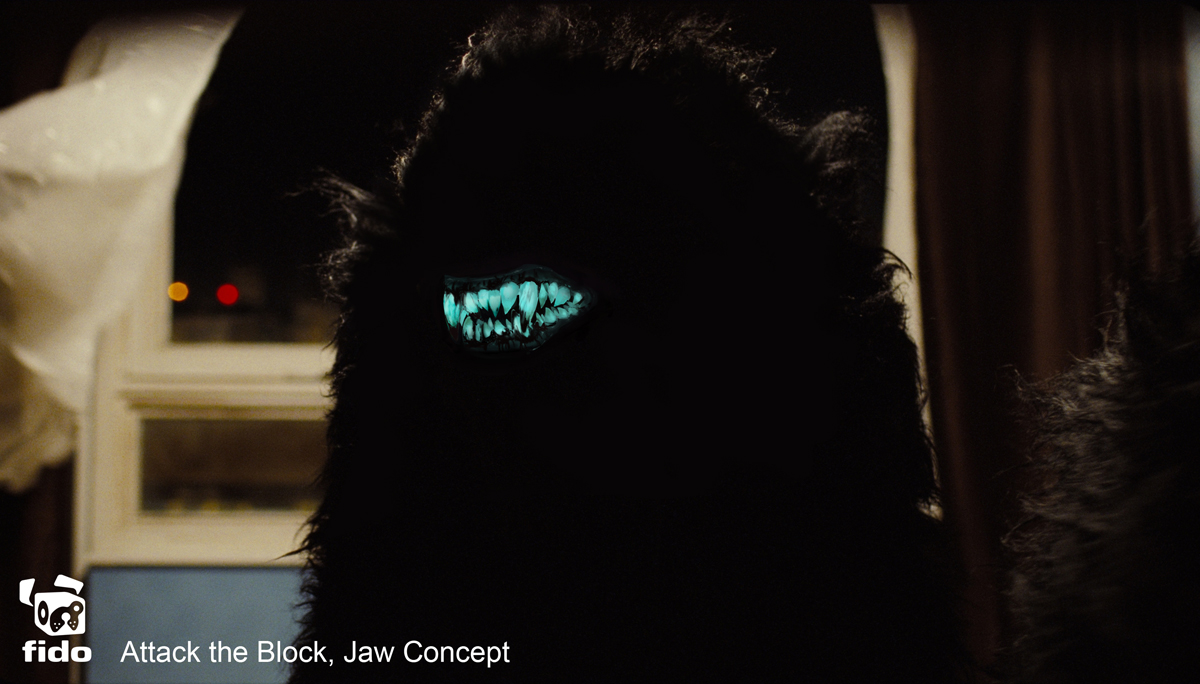 |
Which sequences did you made this show?
Our sequences where spread throughout the film. We did all the creature shots that needed a CG jaw.
How did you share the assets with Double Negative teams?
The only asset that needed to be shared was the look development Dneg had been doing on the fur. They supplied us with a pre-rendered 4k patch of fur which we used as a base for all the fur replacement on the creatures.
Can you explain to us the fur creation?
It was a combination of tricks really. Shots that did not show any great level of parallax were done completely in the comp. We tracked edges of the creature and used patches from the Dneg fur development to create a new spikier outline.
We created full on CG fur for all shots where either the creature or the camera was moving enough to show a shift in parallax. We created a rough model of the creature and made a rig that allowed us to both animate (or « roto-mate ») the creature to the plate, but also push the geometry around to fill in the areas that was needed in screenspace. A lot of time was spent on roto-mating the creatures. It was of course important that the mesh matched the plate on every frame, but we also had to make sure that the animation was smooth enough to not end up with any sudden twitchy moves that would then affect how the fur behaved.
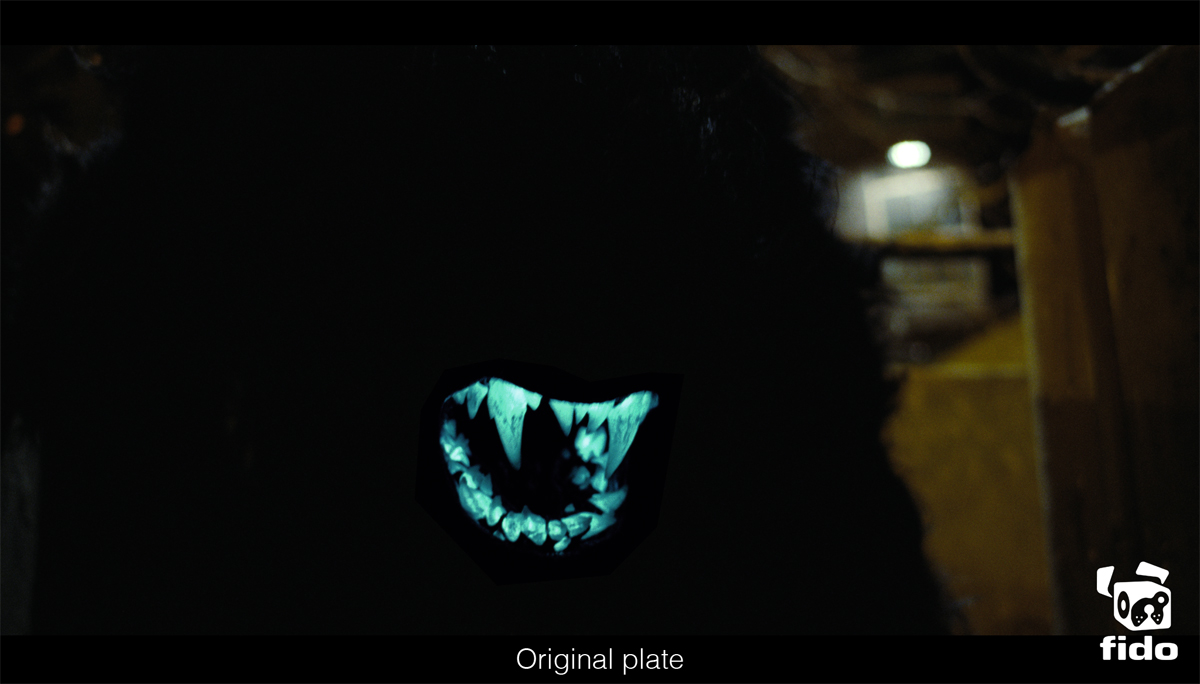 |
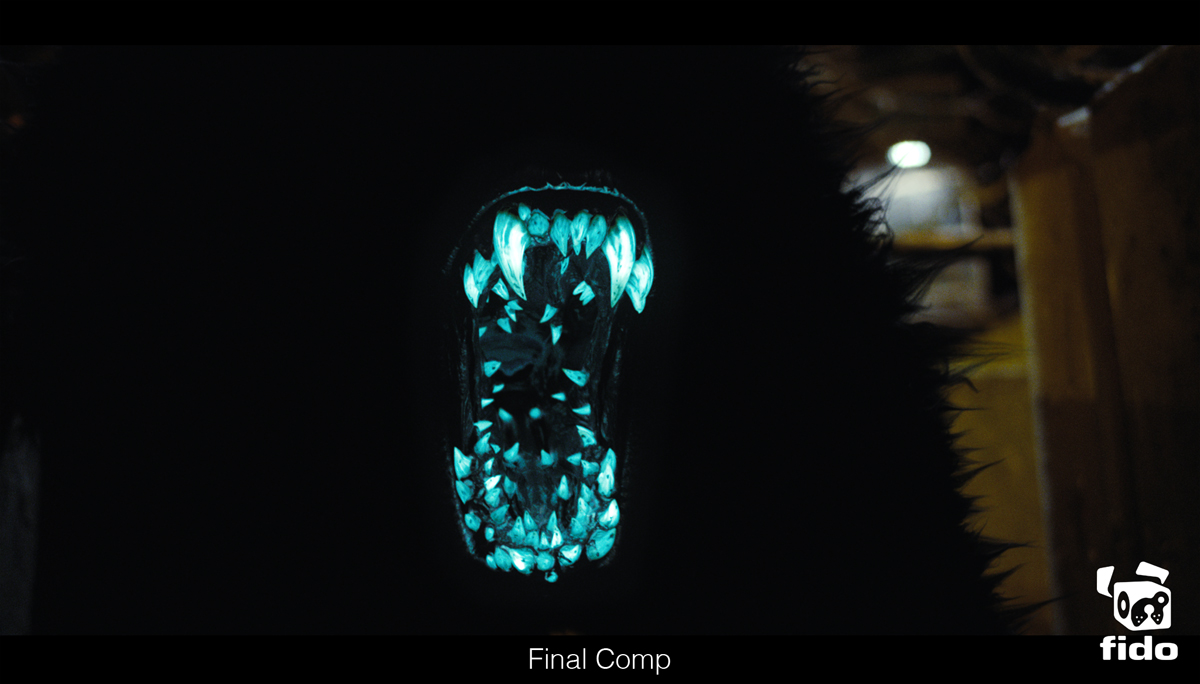 |
What was the main challenge with the jaws and claws of the creatures?
One of the key issues with the animatronic jaws was that it did not have the right mechanics in it to show subtle change of emotion. Since these creatures does not have eyes and are mainly black, the only chance we had to get some sort of emotion or facial expressions out of them was through the mouth. The rigging of the jaw needed to be very comprehensive to allow for a number of extreme poses. But it also needed to give the animators a good chance to hit important beats like snarling, sniffing, frowning and of course the big impressive roars. The shading needed to match the practical jaw that featured in a number of shots. So it was important to get the hue, luminance and glows accurate. Magnus Eriksson did a great job with the modeling and rigging using ZBrush, Mudbox and Maya. It was shaded and rendered in RenderMan by Aron Makkai.
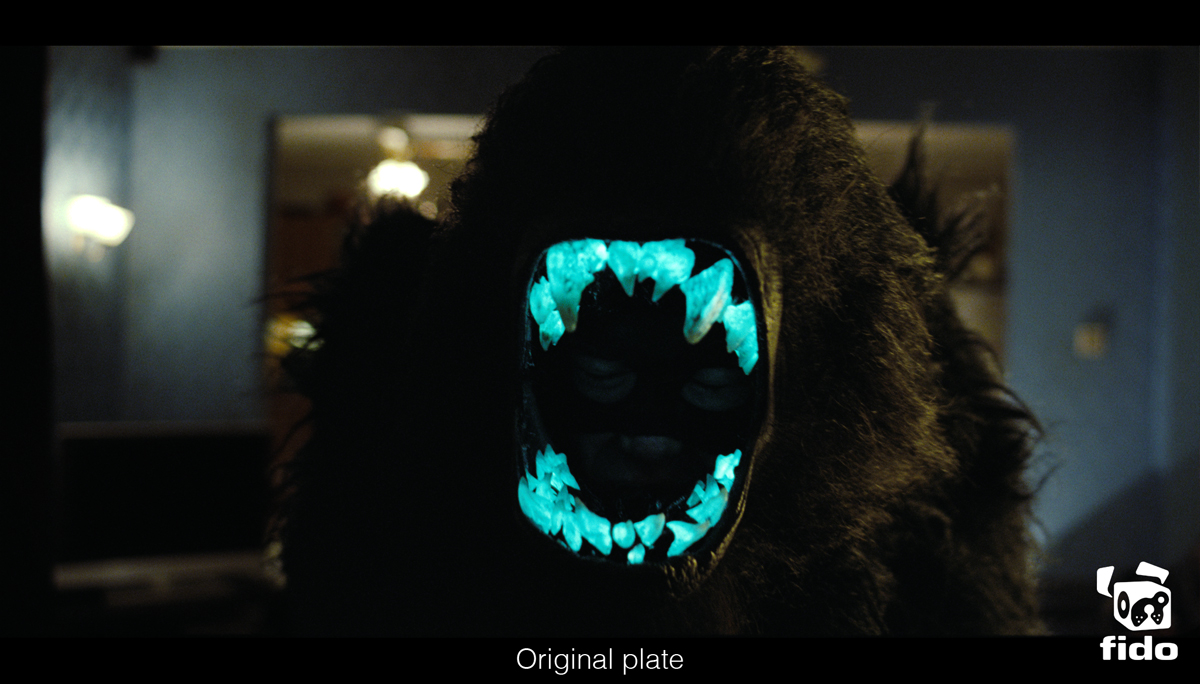 |
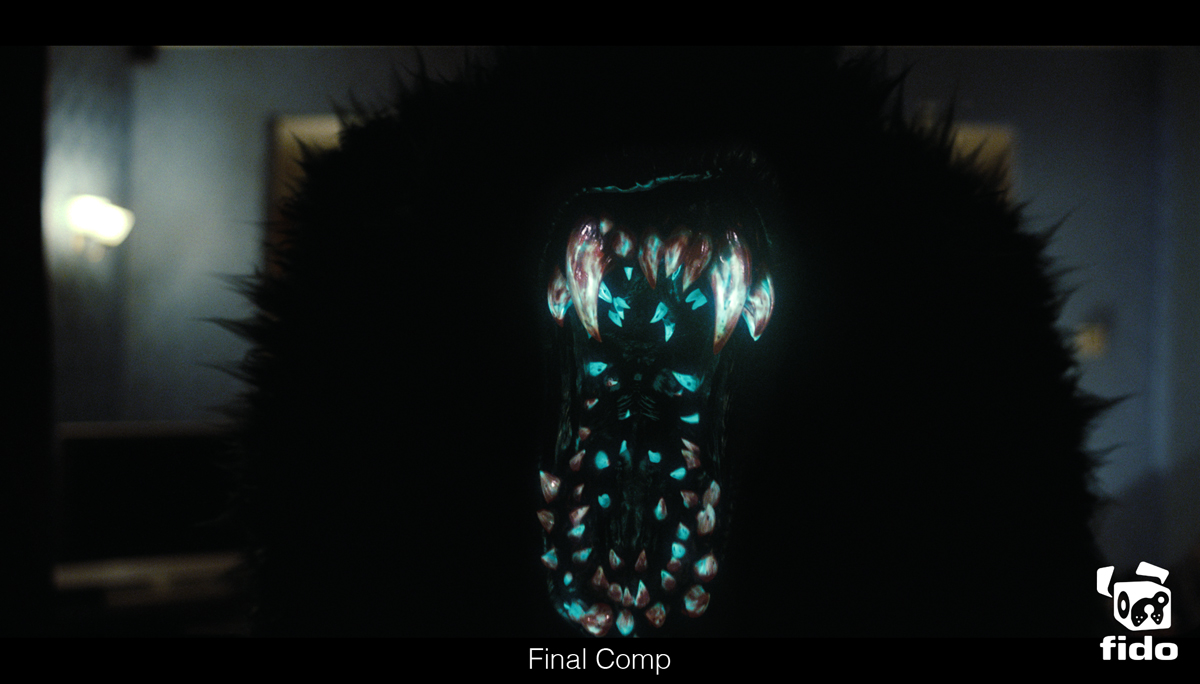 |
How did you animate the creatures?
Most of the time we would start off by “roto-mating” the creatures, using the plate. They had an amazing stunt team on set, so we tried to take as many cues from the original action as possible. In some cases we would go in and add a bit of extra movement to the wrist of the front legs, to make the running motion a bit smoother, or change the shape of the hind legs to make them look less human. The good thing about the creatures being all black apart from the outline was that we could reposition the jaw within the volume of the body. So we would again start off by matching the movement of the practical jaw from the plate. We would then go in and add secondary animation, like bigger head movements or aiming the “eye-line” differently to get a more powerful effect or make them look more threatening.
Where there some shots with full CG creatures?
Yes. A few new ideas came in to the mix late on where we didn’t have any creature plates to work with. So a few of the shots you see are entirely CG.
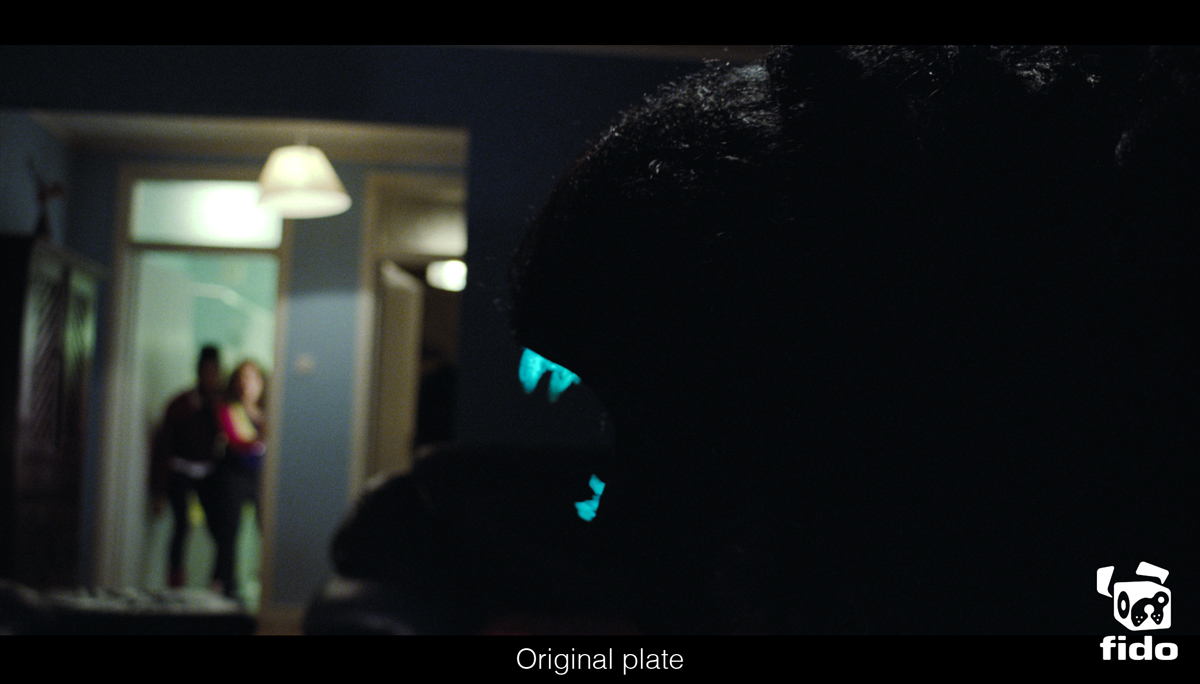 |
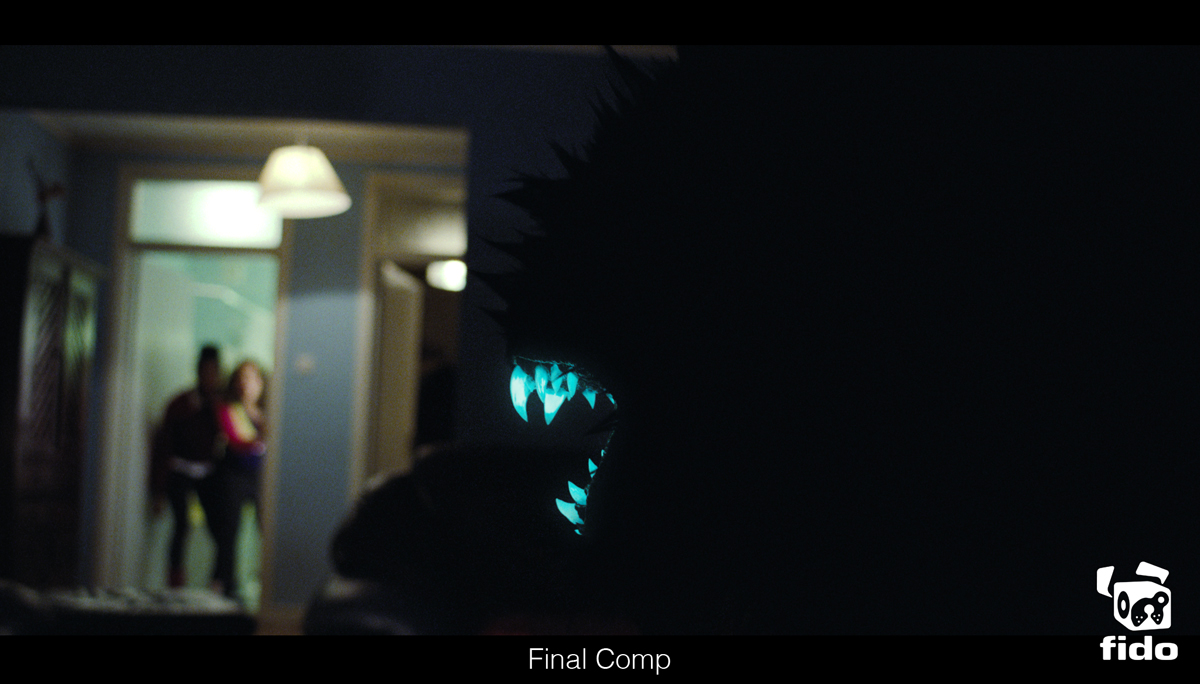 |
How did you manage the lighting challenge with a fur so dark?
It was important to Joe that the body of the creatures would never be illuminated. It is part of the storyline that these creatures are blacker than black. So we had to make sure that any highlights in the fur would only fall on the spiky outline and that the fur was always backlit. We created key light passes that the compositor could expand or contract depending on how much light scatter was needed for each shot. It was also important to keep an eye on the black levels in the comp. We had to always keep an eye on the base black levels in each shot to make sure we didn’t go below it.
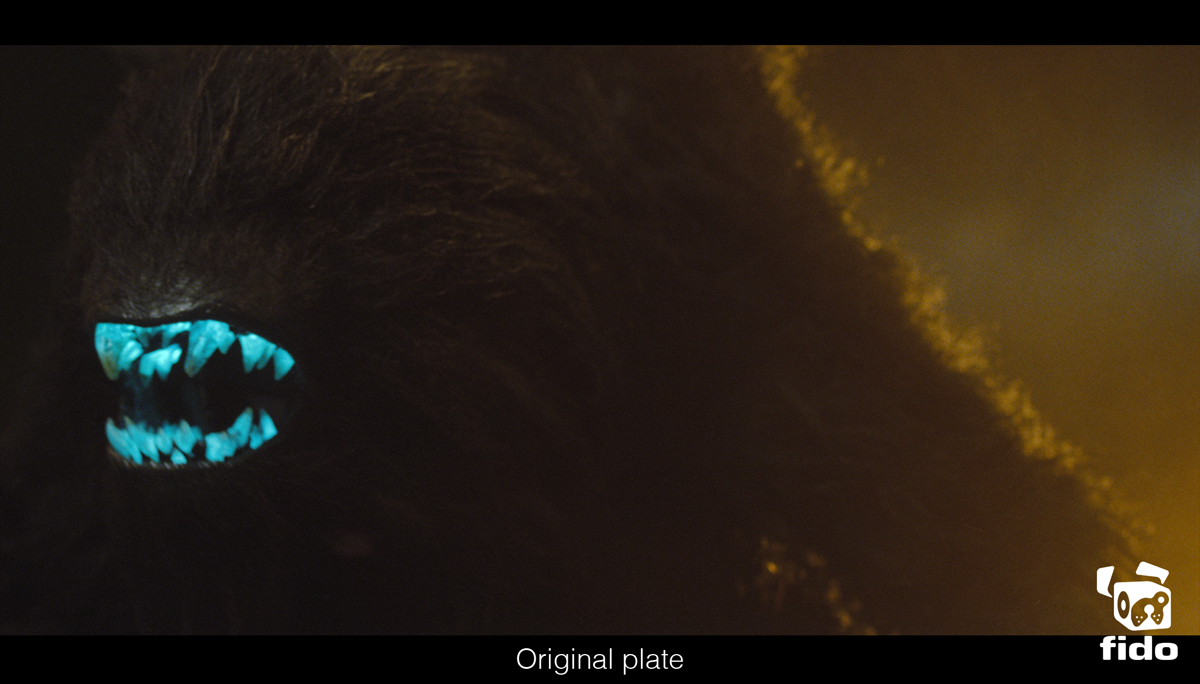 |
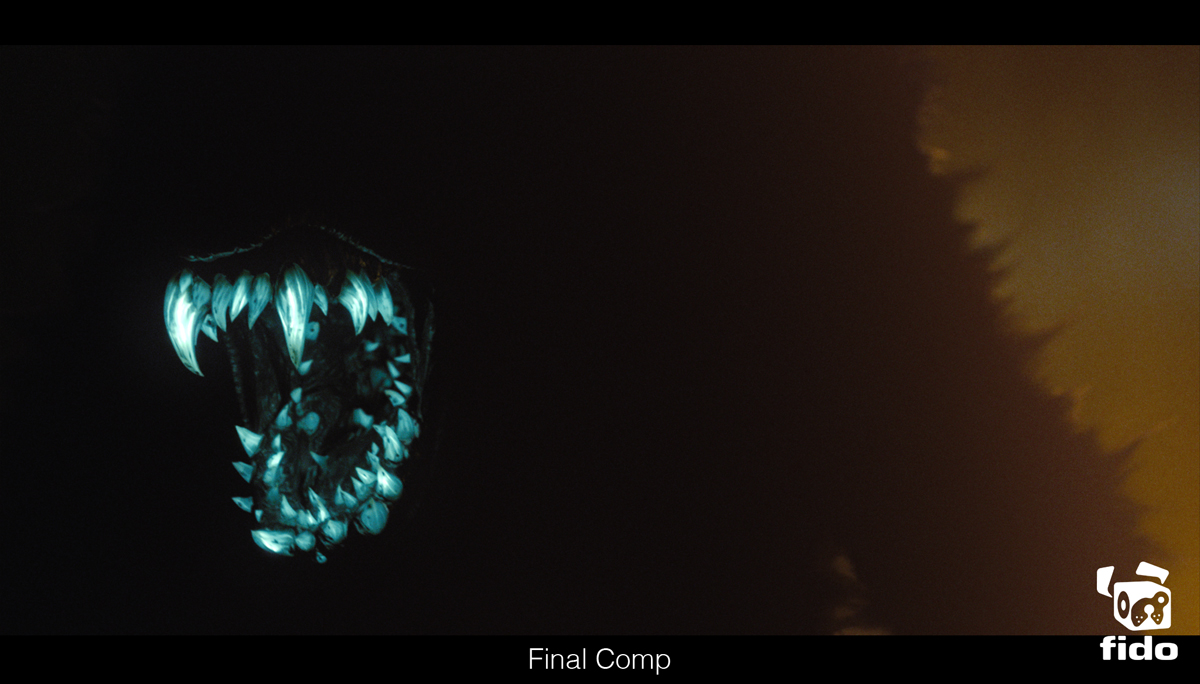 |
Can you explain to us the creation step by step of the great shot in which Moses is chasing by many creatures in the corridor?
Oh yeah. This was one of those shots. When you first look at it you go… Ah crap. We are not going to get much sleep over the next couple of months. There were no dark corners to hide anything in this shot. It was brightly lit and a lot of creatures to add.
The main plate consisted of Moses running down the corridor being chased by 2 creatures. We where then given repeat passes shot on greenscreen using “poor mans moco”. (Meaning the camera crew doing the best to re create the same camera move over and over without the use of motion control) This meant that each greenscreen pass needed to be stabilized and then be animated by hand in the comp to make sure there were no sliding feet. Each creature was then tracked to allow us to replace the fur and add CG jaws and claws. We spent a lot of time getting the wrists on the front legs working since the men in suits was running with stilts inside the suits to extend the front legs. This made the legs very stiff and we had to add another joint to make the run work convincingly. Fredrik Höglin who was the main compositor on the shot did an amazing job pulling it off.
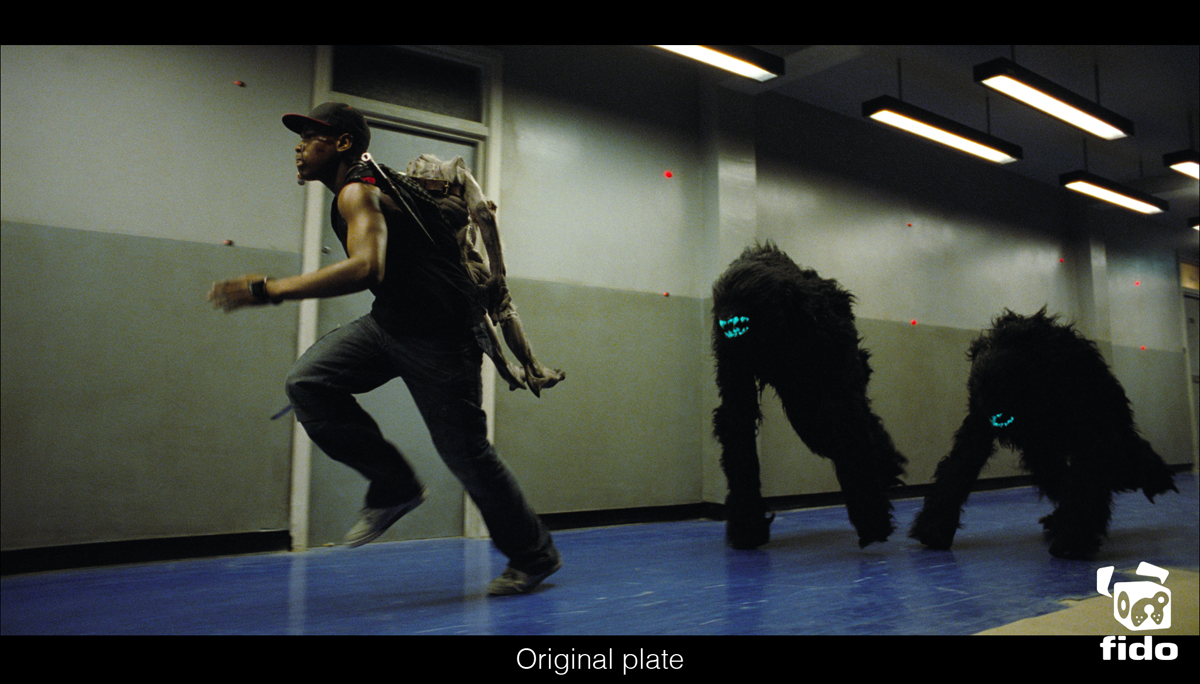 |
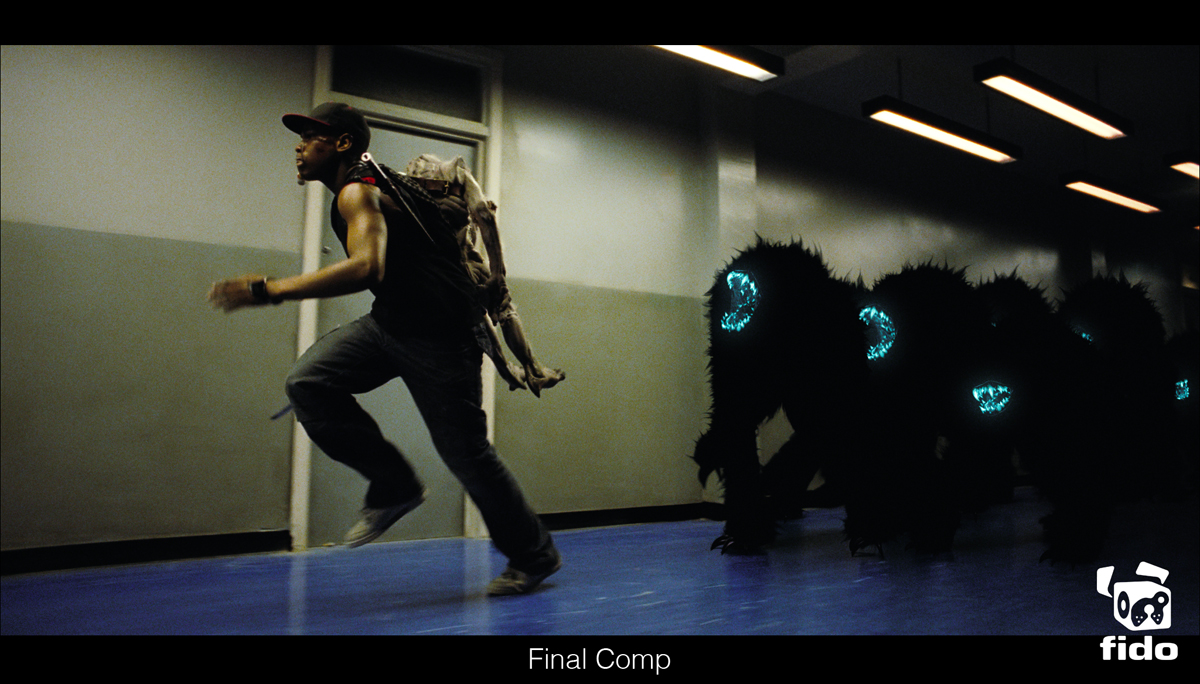 |
Have you created specific tools for this show?
No not really. We do a lot of fur at Fido, so we have already invested quite a lot of time perfecting that part of our pipeline. We are currently working on a tool called SpeedFur, which is amazing. We presented it at this years Siggraph. It was a shame that we didn’t have it finished in time for this show. But we’ll have to save it for the sequel… (laugh)
Did you change your pipeline to fit the show requirements?
No. Thankfully our pipeline is up to scratch to handle this type of jobs. We have a colour space controlled fully EXR based workflow. So it was very straightforward to take Dneg’s lookup table and view our EXR’s through that. This meant that we were absolutely sure that we were looking at exactly the same image as they were over in London.
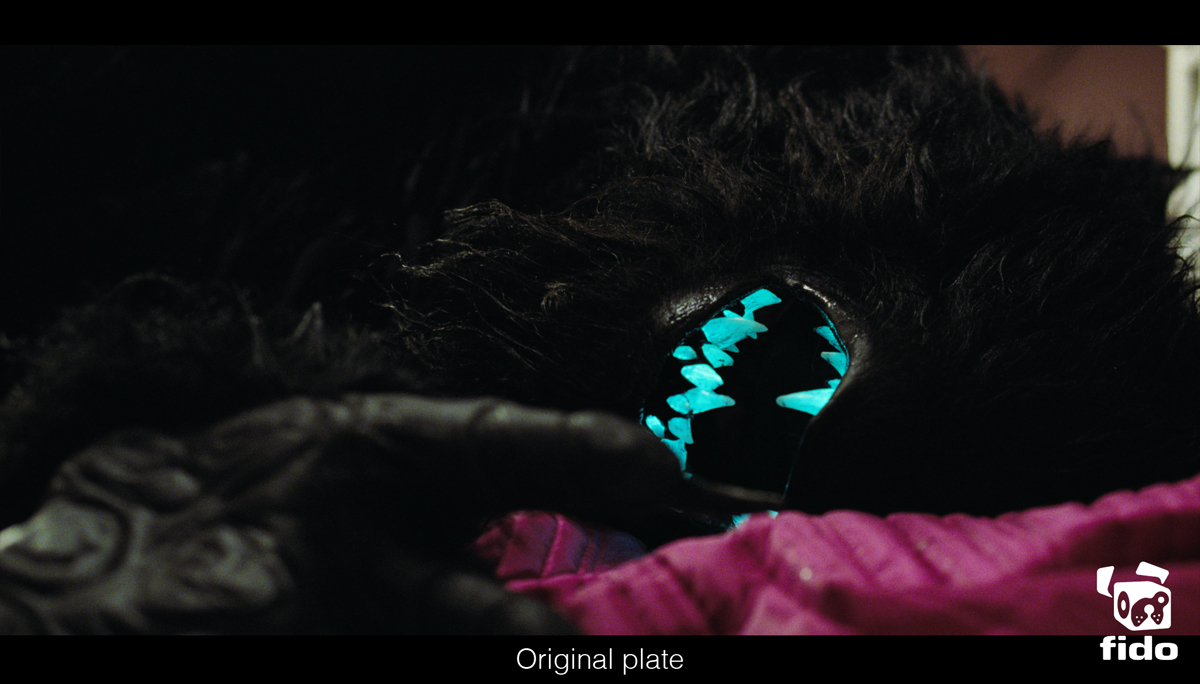 |
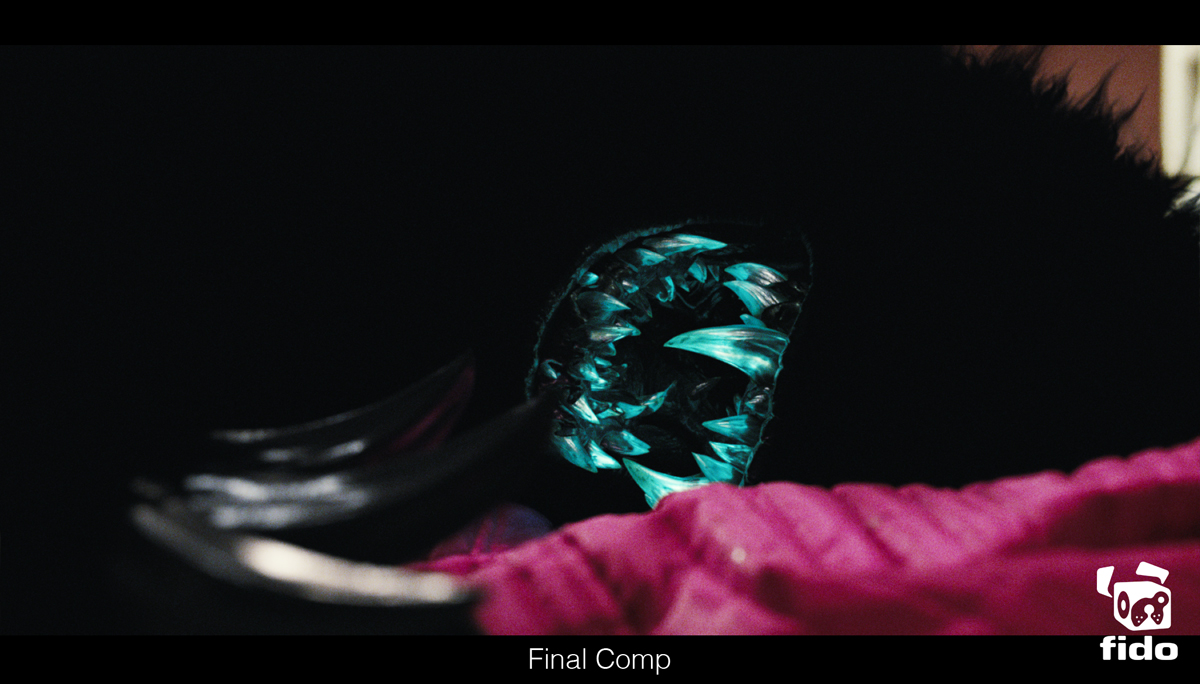 |
What was the biggest challenge on this film and how did you achieve it?
Since the original plan wasn’t really to do this amount of work on the creatures at the time of the shoot, on-set data like lens sizes, lens height, set surveys etc was non-excitant. So it made matchmoving extremely challenging. A lot of work had to be done by eye. The matchmovers did an amazing job pulling it off at this high standard.
Was there a shot or a sequence that prevented you from sleep?
Other than the corridor shot mentioned before there was the sequence leading up to it where Moses jump through a room full of our creatures and fireworks going off. We composited lots of repeat passes of the creatures that had been shot with a locked off camera for each shot. Unfortunately the fireworks had been shot in such a way so we could not pick them out from the background. So we had to re-create them in CG. Joe really liked the look of the practical fireworks, so we had to make sure we matched the look of them. This would not have been a problem at all had we known about at the start of the show. But this came in really late, so we had a few sweaty moments there before we got it done.
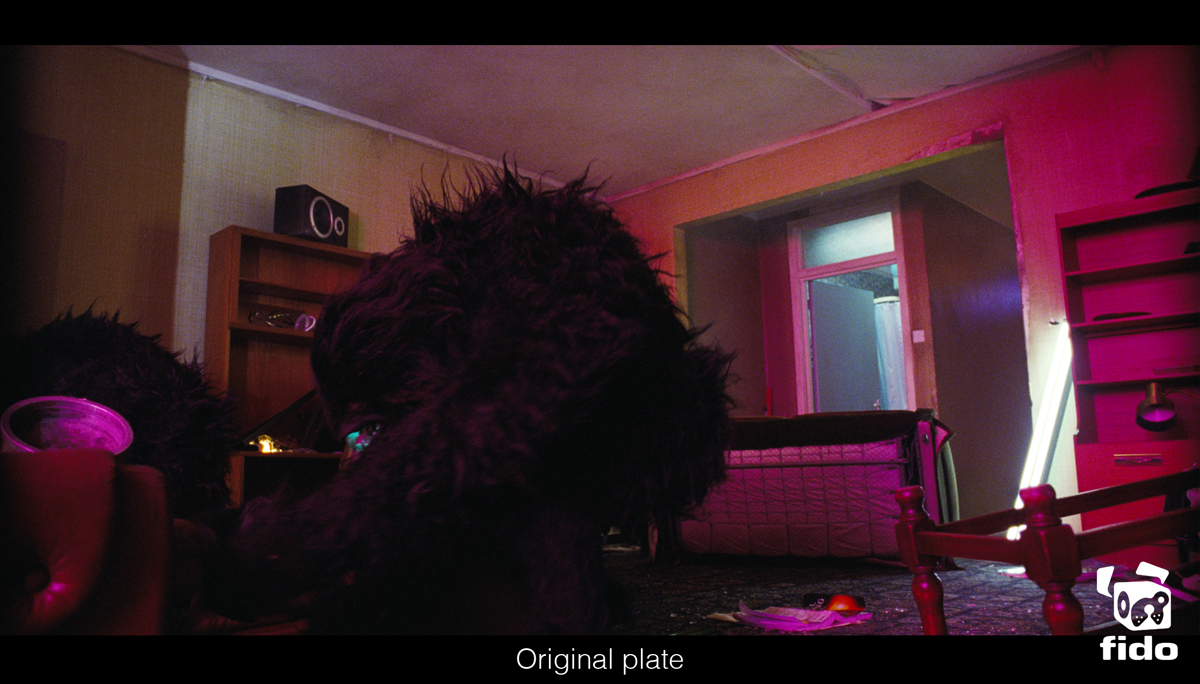 |
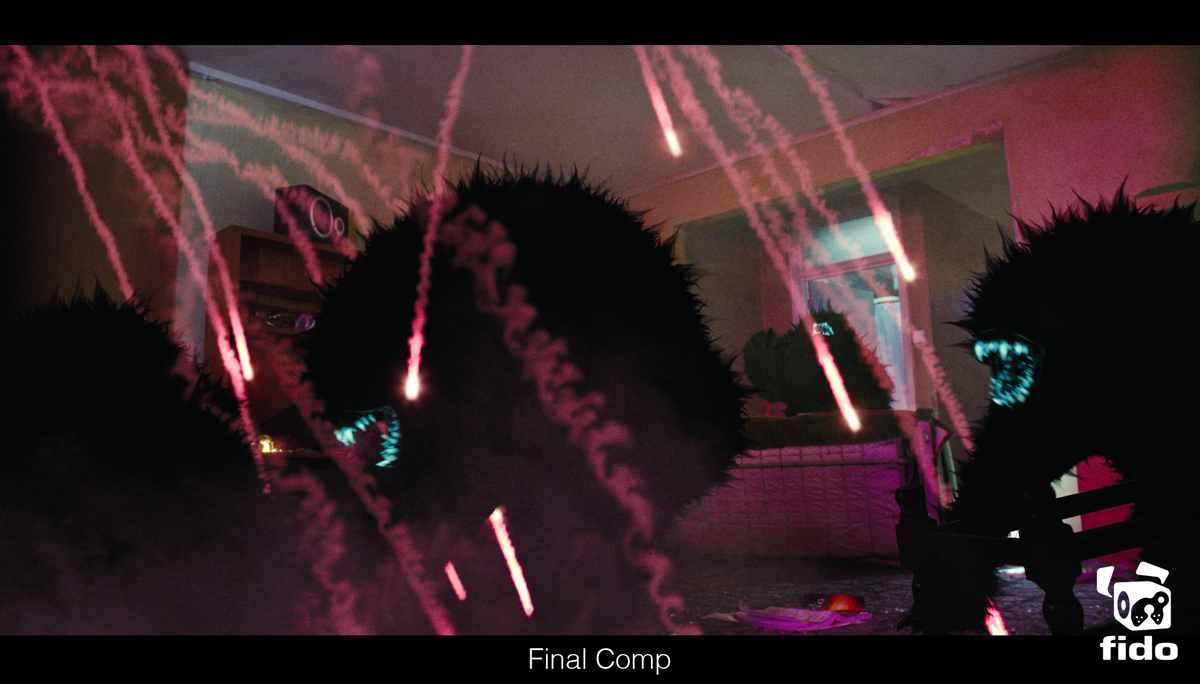 |
What do you keep from this experience?
This was the first show at this scale that we have done remotely. I’m extremely happy with how smooth the communication with London worked. It proved that you can sit in a building in Stockholm and work directly with a production team in the UK.
How long have you worked on this film?
We started bidding and the concept work in August 2010. Shot production ran from October to February 2011. So 4 months.
How many shots have you made?
About 100.
What was the size of your team?
20-25 people at it’s peak.
What is your next project?
We are currently working on 3 features. YOKO, UNDERWORLD AWAKENING and KON-TIKI. Parallel to that we are doing a bunch of commercials.
A big thanks for your time.
// WANT TO KNOW MORE?
– Fido: Official website of Fido.
© Vincent Frei – The Art of VFX – 2011







Merci pour cette interview très bien réalisée et très intéressante !